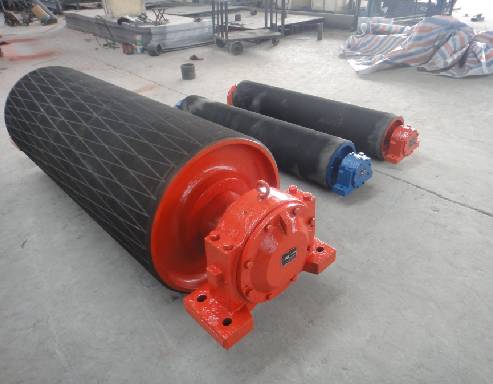 Afrikaans
Afrikaans  Albanian
Albanian  Amharic
Amharic  Arabic
Arabic  Armenian
Armenian  Azerbaijani
Azerbaijani  Basque
Basque  Belarusian
Belarusian  Bengali
Bengali  Bosnian
Bosnian  Bulgarian
Bulgarian  Catalan
Catalan  Cebuano
Cebuano  Corsican
Corsican  Croatian
Croatian  Czech
Czech  Danish
Danish  Dutch
Dutch  English
English  Esperanto
Esperanto  Estonian
Estonian  Finnish
Finnish  French
French  Frisian
Frisian  Galician
Galician  Georgian
Georgian  German
German  Greek
Greek  Gujarati
Gujarati  Haitian Creole
Haitian Creole  hausa
hausa  hawaiian
hawaiian  Hebrew
Hebrew  Hindi
Hindi  Miao
Miao  Hungarian
Hungarian  Icelandic
Icelandic  igbo
igbo  Indonesian
Indonesian  irish
irish  Italian
Italian  Japanese
Japanese  Javanese
Javanese  Kannada
Kannada  kazakh
kazakh  Khmer
Khmer  Rwandese
Rwandese  Korean
Korean  Kurdish
Kurdish  Kyrgyz
Kyrgyz  Lao
Lao  Latin
Latin  Latvian
Latvian  Lithuanian
Lithuanian  Luxembourgish
Luxembourgish  Macedonian
Macedonian  Malgashi
Malgashi  Malay
Malay  Malayalam
Malayalam  Maltese
Maltese  Maori
Maori  Marathi
Marathi  Mongolian
Mongolian  Myanmar
Myanmar  Nepali
Nepali  Norwegian
Norwegian  Norwegian
Norwegian  Occitan
Occitan  Pashto
Pashto  Persian
Persian  Polish
Polish  Portuguese
Portuguese  Punjabi
Punjabi  Romanian
Romanian  Russian
Russian  Samoan
Samoan  Scottish Gaelic
Scottish Gaelic  Serbian
Serbian  Sesotho
Sesotho  Shona
Shona  Sindhi
Sindhi  Sinhala
Sinhala  Slovak
Slovak  Slovenian
Slovenian  Somali
Somali  Spanish
Spanish  Sundanese
Sundanese  Swahili
Swahili  Swedish
Swedish  Tagalog
Tagalog  Tajik
Tajik  Tamil
Tamil  Tatar
Tatar  Telugu
Telugu  Thai
Thai  Turkish
Turkish  Turkmen
Turkmen  Ukrainian
Ukrainian  Urdu
Urdu  Uighur
Uighur  Uzbek
Uzbek  Vietnamese
Vietnamese  Welsh
Welsh  Bantu
Bantu  Yiddish
Yiddish  Yoruba
Yoruba  Zulu
Zulu types of take up pulley
Types of Take-Up Pulleys
Take-up pulleys play a crucial role in various industrial applications, particularly in conveyor systems and hoisting mechanisms. They are designed to manage the tension of belts or cables, ensuring smooth operation and prolonging the equipment's lifespan. Understanding the different types of take-up pulleys is essential for selecting the right one for specific tasks. Here are some common types
1. Fixed Take-Up Pulley This type is stationary and is typically used where there is minimal belt elongation. Fixed take-up pulleys are often found in systems where the layout and tension requirements remain constant. They provide stability and straightforward maintenance but may require manual adjustment if belt tension changes.
Types of Take-Up Pulleys
3. Gravity Take-Up Pulley As the name indicates, this pulley relies on gravity to maintain tension. It typically consists of a weight attached to the pulley system, which naturally applies the required tension as the belt stretches. Gravity take-up pulleys are advantageous in applications where space is limited and minimal maintenance is desired, as they operate seamlessly without complex mechanical systems.
types of take up pulley

4. Powered Take-Up Pulley Powered take-up pulleys use a motorized system to maintain tension automatically. This type is ideal for high-load applications where consistent tension is critical. By adjusting the tension dynamically, powered take-up pulleys can accommodate changes in the belt's length due to wear, temperature fluctuations, or load variations. Although they tend to be more expensive and complex, their efficiency and reliability often justify the investment.
5. Chain Take-Up Pulley In certain applications, chain take-up pulleys are employed, particularly in heavy-duty environments where traditional belt systems may struggle. These pulleys utilize a chain mechanism to facilitate tension adjustments, providing robustness and durability in demanding conditions. They are often found in mining, construction, and heavy manufacturing sectors.
6. Return Take-Up Pulley This type is primarily used in return-side applications where the belt returns to the starting point. Return take-up pulleys manage the slack in the belt and help maintain the overall system's balance. By ensuring consistent tension throughout the system, they contribute to the effective operation of conveyor belts.
In conclusion, the selection of a take-up pulley depends on the specific requirements of the application. Each type has distinct advantages, and understanding these can lead to optimal performance and efficiency in any mechanical setup. Properly utilizing take-up pulleys not only enhances operational stability but also reduces wear and tear on equipment, leading to long-term cost savings.
-
Revolutionizing Conveyor Reliability with Advanced Rubber Lagging PulleysNewsJul.22,2025
-
Powering Precision and Durability with Expert Manufacturers of Conveyor ComponentsNewsJul.22,2025
-
Optimizing Conveyor Systems with Advanced Conveyor AccessoriesNewsJul.22,2025
-
Maximize Conveyor Efficiency with Quality Conveyor Idler PulleysNewsJul.22,2025
-
Future-Proof Your Conveyor System with High-Performance Polyurethane RollerNewsJul.22,2025
-
Driving Efficiency Forward with Quality Idlers and RollersNewsJul.22,2025





























